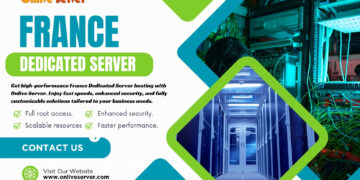In today’s fast-changing world, doing business internationally is easier than ever before. Whether you are planning to buy products from overseas or sell your goods to a global market, having an Import Export Code (IEC) is essential. In simple terms, an IEC is like a passport for your business in the world of international trade. It shows that your business is registered and allowed to import or export products legally. As technology and government processes evolve, so does the way we handle IEC registration. In this article, we will explore the future of IEC registration, looking at the trends and innovations that are set to change the landscape in the coming years.
Understanding IEC Registration
Before we dive into the future, let’s understand what IEC registration is all about. An IEC is a unique 10-digit number issued by the Directorate General of Foreign Trade (DGFT) in India. It is mandatory for all businesses involved in the import and export of goods and services. The registration process, once a time-consuming paperwork exercise, has now become more accessible with online applications and digital verification methods. This change has not only made the process faster but has also reduced the risk of errors and fraud.
Why the Change?
The traditional IEC registration process was often viewed as a hurdle for many small and medium businesses. It required multiple visits to government offices, collecting numerous documents, and waiting for extended periods for approval. However, with advancements in digital technology and an increasing demand for efficiency, the process is rapidly evolving. The goal of these innovations is to simplify the registration process, making it smoother and more user-friendly for everyone involved.
Digital Transformation in IEC Registration
One of the most significant trends shaping the future of IEC registration is digital transformation. Digital platforms have revolutionized many aspects of our lives, and government services are no exception. Here’s how digital transformation is influencing IEC registration:
Online Application Process
The shift from paper-based to online applications means that businesses can now complete their registration from anywhere, at any time. This change is making it easier for new entrepreneurs to start their international trade journey without being bogged down by bureaucratic delays.
Automated Verification
Automation helps in verifying documents and information quickly and accurately. Instead of manually checking every detail, automated systems can cross-check data with existing government databases. This not only speeds up the process but also minimizes human errors.
User-Friendly Interfaces
Government websites are continually being updated to make them more intuitive. A simpler, more engaging user interface helps reduce confusion among applicants, ensuring that even those with limited technical skills can navigate the registration process with ease.
Innovations That Are on the Horizon
The future of IEC registration is not just about making existing processes digital—it’s about integrating cutting-edge technologies that further enhance efficiency and security. Here are some innovations that could become a part of the IEC registration landscape:
Blockchain Technology
Blockchain is a secure way to store and verify data without the risk of tampering. Imagine a system where every document or piece of information submitted during the IEC registration process is recorded on a blockchain. This could ensure complete transparency and make it nearly impossible for fraudulent activities to occur.
Artificial Intelligence (AI)
AI can be used to analyze applications and identify patterns that might indicate errors or inconsistencies. By using AI, the system can flag issues before they become major problems, ensuring that the registration process is as smooth as possible.
Digital Signatures and Biometrics
Innovations in digital signatures and biometric verification can add another layer of security. Instead of traditional signatures or physical identification methods, businesses might soon use fingerprint scans or facial recognition to verify their identity. This would make the process faster and more secure.
Mobile Applications
With the increasing use of smartphones, having a mobile application dedicated to IEC registration could be a game-changer. Businesses could complete applications, track their progress, and receive notifications on their mobile devices, making the whole process more accessible and convenient.
How These Trends Benefit Businesses
The trends and innovations in IEC registration are not just about technology—they have real benefits for businesses, both big and small. Here’s how these changes can help:
- Time Savings: With online applications and automated verification, what used to take days or weeks can now be completed in a matter of hours. This means businesses can start trading sooner.
- Cost Reduction: Digital processes reduce the need for physical paperwork, multiple visits to government offices, and even the need for intermediaries. This can lead to significant cost savings for businesses, especially small and medium enterprises.
- Increased Transparency: Innovations like blockchain technology ensure that every step of the registration process is transparent. Businesses can easily track their application’s progress, which builds trust in the system.
- Enhanced Security: With digital signatures, biometrics, and secure data storage methods, the risk of fraud is greatly reduced. This gives businesses confidence that their sensitive information is well-protected.
- Greater Accessibility: A mobile-friendly and user-centered approach makes IEC registration more accessible to a wider range of businesses. Whether you are a seasoned exporter or a newcomer to international trade, the process becomes more approachable.
Potential Challenges Ahead
While the future of IEC registration looks promising, it is not without challenges. The rapid shift to digital platforms requires robust cybersecurity measures. With increased online activity, the threat of cyber-attacks and data breaches also rises. Government bodies must invest in state-of-the-art security systems and regularly update them to keep up with emerging threats.
Another challenge is ensuring that everyone, regardless of their technical ability or access to technology, can benefit from these innovations. Rural businesses and small enterprises may not have the same level of access to high-speed internet or modern devices. Addressing this digital divide is essential to ensure that the benefits of streamlined IEC registration are shared by all.
Preparing for the Future
Businesses can take several steps today to prepare for these upcoming changes in IEC registration. Staying informed about new technologies and updates to the registration process is key. Many government agencies now offer online tutorials, FAQs, and customer support to help businesses navigate these changes. By taking advantage of these resources, companies can ensure that they are ready for the future.
Moreover, collaborating with experts in the field of international trade can help businesses understand and adapt to new requirements. Whether through workshops, webinars, or consulting services, being proactive about learning the new system will help companies stay ahead of the curve.
NOTE: For IEC Code Renewal, just click RENEW THE IEC CODE ONLINE
Conclusion
The future of IEC registration is bright and filled with opportunities for innovation and improvement. As the world becomes more digital, the way we register and manage our international trade credentials is also evolving. With trends like online applications, automated verification, blockchain technology, and AI coming to the forefront, businesses can look forward to a faster, more secure, and more transparent registration process. These changes are not just about technology—they are about making international trade accessible and efficient for every business, big or small. While challenges such as cybersecurity and the digital divide remain, the overall direction is positive. By embracing these innovations and preparing for the changes ahead, businesses can confidently step into a future where IEC registration is simpler, more efficient, and better suited to the needs of a global marketplace.

























